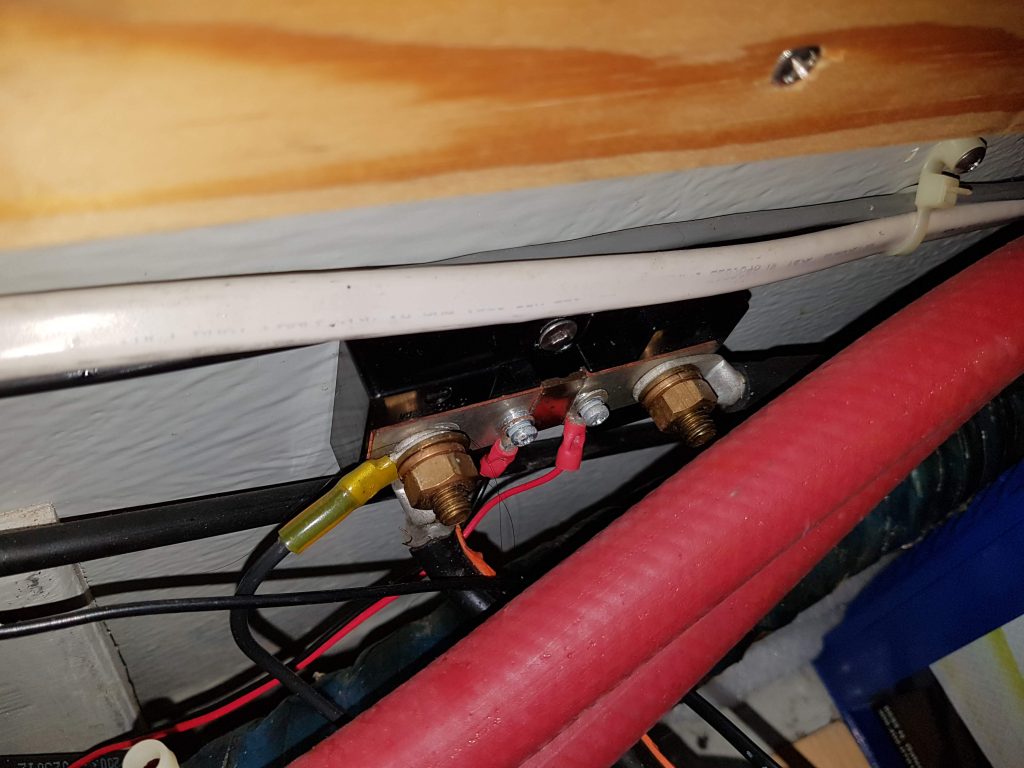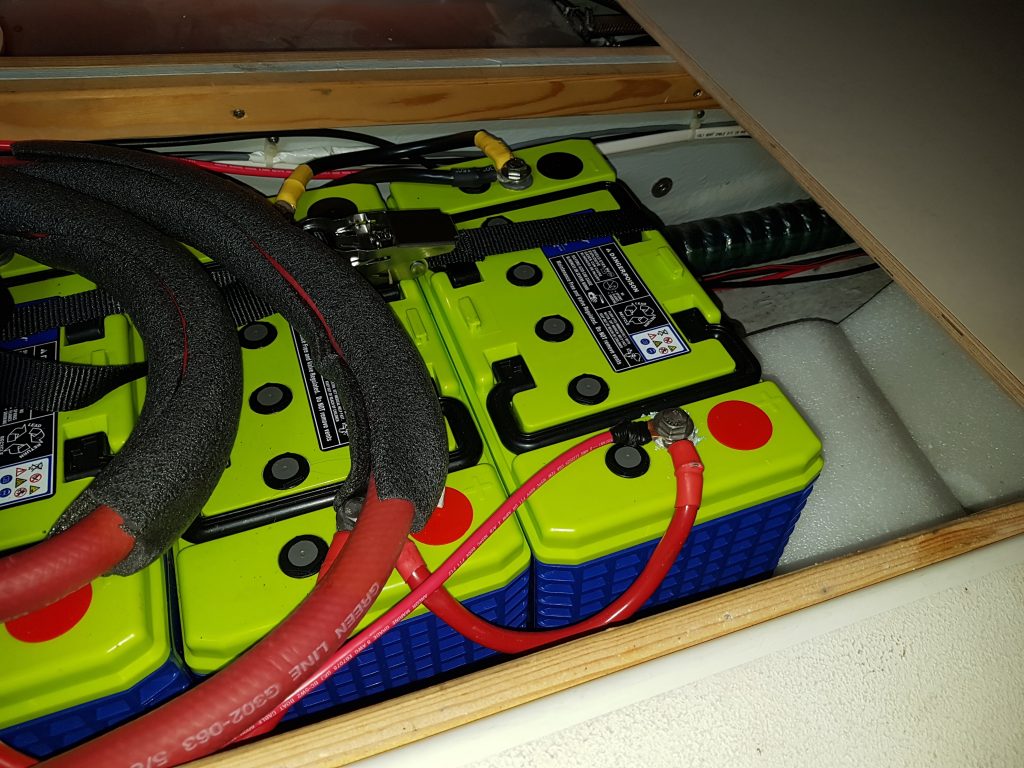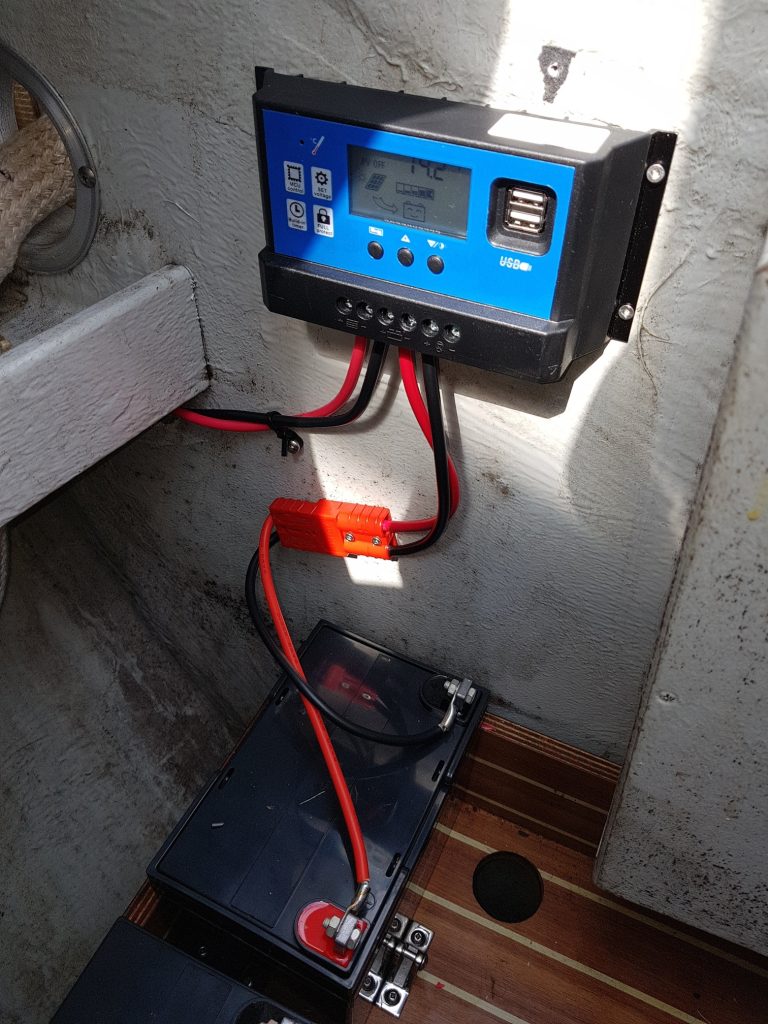Part 1 is here.
Using an electric trolling motor to power your tender is very simple. Put the motor on the transom and tighten the thumb screws. Connect the battery and you are ready to go. Twist the throttle for speed and steer with the tiller. Unlike my old gas outboard, the motor has reverse which makes it a cinch to dock.
How Fast?
When I tested my 8.5′ Achilles inflatable with the Newport Vessels 36 lb thrust motor I got 2.75 knots at maximum and 2.2 knots on speed 4 of the 5 forward speeds. Speed was measured with the iBoating GPS app on my Samsung smartphone.
How Far?
About 40 minutes on one battery before it begins to lose some speed. A distance of about 1.6 nautical miles. With a second battery in reserve a 3 mile round trip should be a safe plan. This is about double the distance we ever travel when going ashore from an anchorage.
Charging the Battery
The most important part of the electric setup is not the motor but the battery, Trolling motor manufacturers seem to assume you will be charging the battery from AC power, using a standard 12 V charger. This isn’t practical on a sailing vessel underway or at anchor. On my boat we have solar panels and of course the alternator on the engine.
What is needed is a way to charge the dinghy batteries from the house 12 volt batteries. In our case this is a 330 AH bank of 3 Firefly Carbon Foam cells. Fabulous batteries and highly recommended. Theoretically the smaller dinghy batteries could be charged by just paralleling them with the main batteries. However, because of the large capacity of the main batteries, I feared that plugging a heavily discharged dinghy battery in might cause it to charge too rapidly and overheat. I couldn’t at first find a suitable charger for this situation. However a comprehensive search turned up this one, which I believe is the correct solution:
Before discovering the Renogy I ordered an inexpensive Solar regulator which I am hoping will do the job. The difference is this. The Renogy has “step up” capabilities which will give the dinghy battery a full charge, even if the main battery is below full. The low cost solar unit cannot output anything higher than the voltage of the main batteries. Since my main batteries are charged with solar panels and, when available, shore power, I think this will be adequate, but only time will tell. If the cheap regulator fails to do the job I’ll buy the Renogy.
I found a suitable location for the two batteries in the starboard cockpit locker, which has a large shelf with a 4″ high fiddle. A few pieces of scrap StarBoard were used to make locators to hold the batteries in place when heeled. I made up two 12″ wire and Anderson plug assemblies for the batteries and attached them. Then I installed the regulator on the aft bulkhead of the locker and connected a similar plug to the output. Finally I ran longer (15 feet in this case) cables back to the main battery bank, through the lazarette and under the aft cabin berth, where the batteries are located.
My boat has a battery monitor system to keep track of the state of charge and usage of the house batteries. This has a shunt in the negative line of the battery. Since the dinghy regulator is a LOAD the negative lead most be connected on the other side of the shunt from the house battery. The positive side is connected to positive directly on the battery bank.



So it seems to be working, but I can’t really test the charging system until I use the motor heavily. So another post in the future when I have more experience.

I have used this for a while now, and it seems to work satisfactorily. The dinghy batteries recharge quickly when plugged in.